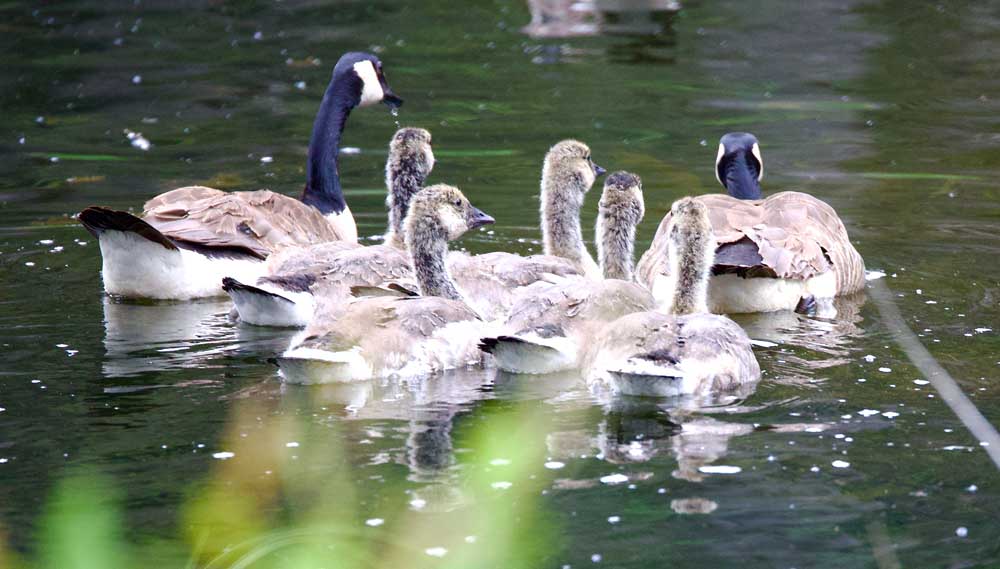Birding: July brings fledglings on parade
Published 9:40 am Thursday, July 6, 2023

- These goslings are “teenagers.” It won’t be long before they will reach adulthood.
After seeing so many fledglings, their parents, and feeding behavior during the past few weeks, I thought it was time to look for fledgling waterbirds — more specifically, ducklings and goslings.
Trending
It is about time for ducklings and goslings to be seen on parade as they follow one or both of their parents on the water or on land. Waterfowl parents seem particularly attentive to their young. Most nestlings leave the nest within 24 hours of hatching. Very young fledglings often scamper along the water like skipping stones as they try to keep up with a parent or are gobbling up insects from the surface of the pond, lake, or slough.
The Canada goose is the most widespread and common goose in North America. It is also the most familiar. Pairs usually mate for life, but as one ornithologist indicates, they occasionally divorce! Canada geese may have up to two broods between May and August and lay anywhere from two to 12 eggs. One very, interesting fact is that there is such a thing as gang broods. Twenty to 100 goslings following only a few adults is considered a gang. This phenomenon usually occurs where high-density nesting occurs and in southern latitudes.
Canada goose goslings leave the nest within 24 hours. They are very small and are clothed in soft, yellow down. Around four weeks and sometimes a sooner, they will begin to have a few feathers. By 10 weeks they are usually fully feathered. Once the goslings are fully feathered, they are adults.
Trending
The bufflehead is the smallest diving duck in North America. Interestingly, its range corresponds to that of the northern flicker, because it usually nests in abandoned flicker cavities (Bird, 2020). It nests near water, and has one brood of seven to nine eggs.
The mallard is almost as familiar as the Canada goose. It seems to be everywhere in ditches, ponds, sloughs, lakes etc. Wherever there is water there is a mallard. I have even had a pair of mallards in my yard for days. The female would sit in the bird bath for hours while the drake sat nearby. As odd as it may seem, the male always let me know when the water in the bath was dirty and needed to be changed. One day it even tapped on the window to get my attention. The mallard has one brood sometime between February and September and lays anywhere from six to 15 eggs. They nest on the ground near water or on floating vegetation.
Ducklings generally follow the same pathway to adulthood as goslings. All are covered in down for the first few weeks, then a few feathers begin to appear and finally in about 10 or so weeks they become full feathered, and when this occurs, they have reached adulthood. It was a good day on the hunt for fledgling ducklings and goslings on parade. Families were parading across the ponds or sloughs with their babies in tow. Keep your eyes open and you may see parades too! Happy birding!









